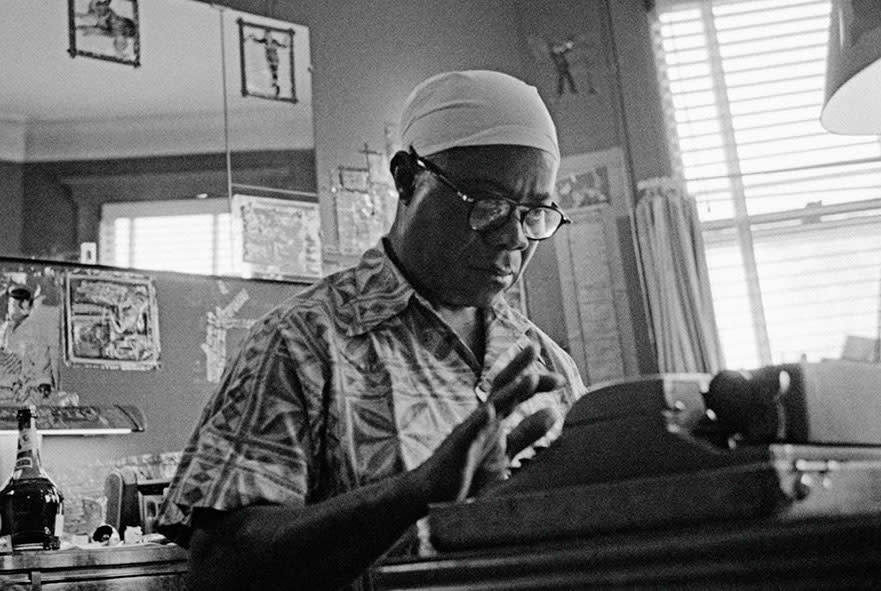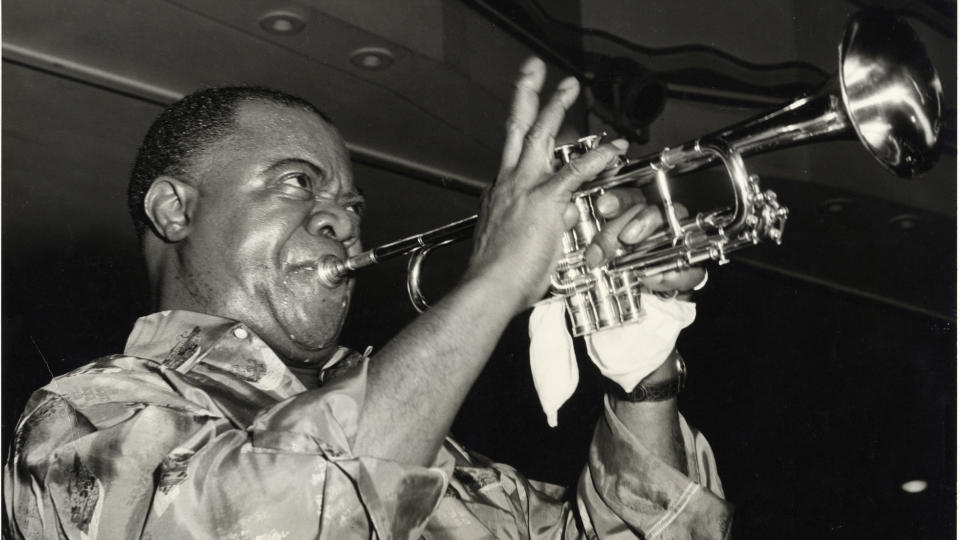‘Louis Armstrong’s Black & Blues’ Review: A Legend Comes to Life Once More

Director Sacha Jenkins does the most important thing he could do in “Louis Armstrong’s Black & Blues”: He lets Louis Armstrong be messy.
Armstrong is one of those legends about whom people have had strong, polarized opinions. He’s either the greatest artist of the 20th century, in the esteem of Robert Christgau or Wynton Marsalis. Or he’s an Uncle Tom, someone who sold out and pandered to white audiences, as Sammy Davis Jr. (and, for a time in his youth, Marsalis as well) once thought. And of course there’s the third path of corporate America, to sand the edges of someone like Armstrong down until he’s a cuddly teddy bear whose “What a Wonderful World” stands ready to accompany any commercial.
More from IndieWire
'Lord of The Ants' Review: Italy's Homophobic Past, with Too Many Insect Metaphors
Billy Eichner's 'Bros' Could Be an Oscar Contender for Best Original Screenplay
Jenkins’ new documentary for Apple TV+ avoids those absolutes. He’s interested in the man who was Armstrong, and that means a more complete, nuanced picture — a portrait of a human not so easy to categorize. He brings Armstrong to life through archive footage (Dick Cavett and Mike Douglas’s shows get a workout here), voiceover audio he recorded of himself, and having Nas read passages of his letters. There are no talking heads except for Armstrong himself and some select archival material of others, nothing newly recorded. In that respect, “Black & Blues” feels a lot like Apple TV+’s big music doc from last year, Todd Haynes’ “The Velvet Underground.”
And “Black & Blues” indeed has similar aesthetic flourishes to Haynes’ doc. Jenkins interposes some of the audio-only content over collage-like animations in which old photos pop against a red background and words from the interviews fly out at you like the Fitzgerald text flung at the camera in Baz Luhrmann’s “Great Gatsby.” It’s a fun effect, and makes you think for a moment that Armstrong is alive, well, and ready to “sweeten the air with entertainment” as Orson Welles put it in one of his more colorful TV intros for the jazzman.
It’s especially fitting having Nas become the voice of “Pops” Armstrong. Rap artists have been subjected to many of the same criticisms as Armstrong himself: that by reveling in wealth they are supporting a capitalist system in which they don’t wield the levers of power. Armstrong was accused constantly of “selling out” or buying into a hegemonic power structure that enriched him while disempowering other Black Americans.

Apple Original Films
What’s so gratifying is to hear, in Pops’ own words, that he fully understood that system and hated it. He tells a story about how after Pearl Harbor a white sailor came up to him at a USO show where he was performing and wanted to shake his hand. “’You know, I don’t like Negroes,’” Armstrong recounted the sailor saying. “Right to my fucking face that motherfucker told me. I said, ‘Well, I admire your goddamn sincerity.’ And he says, ‘I don’t like Negroes, but you one I’m crazy about.’ Two thirds of white people don’t like blacks, but there’s always one they’re crazy about. Ain’t that a bitch?”
Those can hardly be seen as the words of an Uncle Tom. More provocatively, in this era of “respecting the flag” being more important to the Right than stopping the mass killing of Black people at the hands of white cops, Pops also was known to perform in private his own version of “The Star-Spangled Banner” laced with obscenities, such as “Oh say, can you motherfuckers see!…” When a reporter in North Dakota got him on the record criticizing Eisenhower in 1957 for failing to act more decisively to send in the troops to force school integration in Arkansas, he told the president that if they did send the Army in, “Take me along, Daddy,” he’d go with them.
Jenkins presents all of this with a vividness that it never quite has had in a documentary about Armstrong before. Certainly not in Ken Burns’ “Jazz,” which focuses mainly on Marsalis flinging superlatives about Pops while avoiding some of the spikier aspects of his life that might ruffle white feathers.
When it actually comes to assessing Armstrong’s music, that’s where “Black & Blues” is a letdown. There may not be a single one of his songs heard in its entirety here. It skips fast through his artistry. It briefly touches on the overpowering might of his trumpet playing, then his revolutionary approach to singing with not just his scats but his speaking-like nuances that, along with Bing Crosby’s croon, added more inflection and emotionality into what would basically just become the American style of singing in pop music. (No more operatic trills or Rudy Vallée warbles.) It’s possible Jenkins took on too much here. Marsalis, who has become the gatekeeper to the jazz world as Harold Bloom was to literature’s “Western Canon,” is mostly the one to discuss Armstrong’s artistry. Which is unfortunate, because he is mostly saying the same things he said in Ken Burns’ “Jazz.”
“Black & Blues” may not be a movie that inspires you to fire up Armstrong’s albums on Spotify. That’s a shame, because his music beyond his megahits of the ‘60s (“What a Wonderful World,” “Hello Dolly!”) deserves to be heard and appreciated if you care about music at all. “West End Blues” needed more than a brief shout-out here. And I’m still waiting for his “Saint Louis Blues,” with its hopping one-note repetition, to be recognized as proto rock ‘n roll in 1929. But
Grade: B
“Louis Armstrong’s Black & Blues” premiered at the 2022 Toronto International Film Festival. It will be released by Apple TV+ on October 28.
Best of IndieWire
From 'Barbie' to 'Babylon,' Here's Everything Margot Robbie Has in the Works
New Movies: Release Calendar for September 2, Plus Where to Watch the Latest Films
Sign up for Indiewire's Newsletter. For the latest news, follow us on Facebook, Twitter, and Instagram.

 Yahoo News
Yahoo News 
